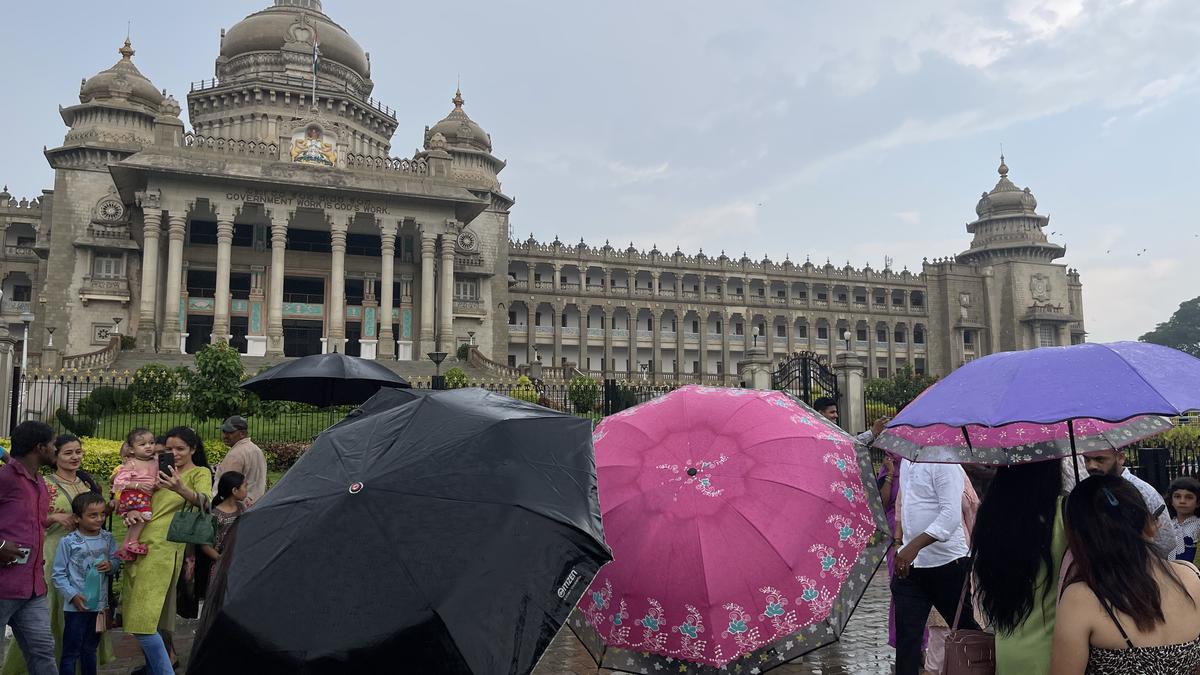
Southwest monsoon likely to hit Karnataka on June 2: IMD
The Hindu
IMD predicts southwest monsoon to advance into south Karnataka by June 2, with heavy rain expected in certain districts.
With the southwest monsoon setting in over Kerala on Thursday (May 30), the India Meteorological Department, Bengaluru, has forecast that conditions are favourable for the monsoon to advance further into some parts of south Karnataka by June 2.
The daily weather report issued by the IMD for Karnataka on Thursday said, “Southwest monsoon has advanced into remaining parts of southwest Arabian Sea, some parts of west-central Arabian Sea, most parts southeast Arabian Sea and Lakshadweep area, Kerala, Mahe, some parts of south Tamil Nadu, remaining parts of Maldives and Comorin area; Thus, the southwest monsoon has set in over Kerala, today the 30th May 2024.”
It further added that conditions are favourable for the southwest monsoon to advance further into some more parts of the central Arabian Sea, the remaining parts of the south Arabian Sea, Lakshadweep area and Kerala, some parts of Karnataka, and some more parts of Tamil Nadu during the next two to three days.
“The southwest monsoon is likely to hit the southern parts of Karnataka on June 2. The districts of Chamarajnagar, Mysuru, and Kodagu, besides the coastal districts of Dakshina Kannada, Udupi are likely to receive showers,” C.S. Patil, a scientist at IMD, Bengaluru, said.
The forecast for June 2 states that heavy rain and thundershowers associated with gusty winds (30-40 kmph) are very likely to occur at isolated places over Raichur, Yadgir, Koppal, Bagalkot, Vijayapura, Ramanagara, Kodagu, Bengaluru Rural, Bengaluru Urban, Kolar, Chikkaballapur, Mysuru, Mandya districts.

“Writing, in general, is a very solitary process,” says Yauvanika Chopra, Associate Director at The New India Foundation (NIF), which, earlier this year, announced the 12th edition of its NIF Book Fellowships for research and scholarship about Indian history after Independence. While authors, in general, are built for it, it can still get very lonely, says Chopra, pointing out that the fellowship’s community support is as valuable as the monetary benefits it offers. “There is a solid community of NIF fellows, trustees, language experts, jury members, all of whom are incredibly competent,” she says. “They really help make authors feel supported from manuscript to publication, so you never feel like you’re struggling through isolation.”

Several principals of government and private schools in Delhi on Tuesday said the Directorate of Education (DoE) circular from a day earlier, directing schools to conduct classes in ‘hybrid’ mode, had caused confusion regarding day-to-day operations as they did not know how many students would return to school from Wednesday and how would teachers instruct in two modes — online and in person — at once. The DoE circular on Monday had also stated that the option to “exercise online mode of education, wherever available, shall vest with the students and their guardians”. Several schoolteachers also expressed confusion regarding the DoE order. A government schoolteacher said he was unsure of how to cope with the resumption of physical classes, given that the order directing government offices to ensure that 50% of the employees work from home is still in place. On Monday, the Commission for Air Quality Management in the National Capital Region and Adjoining Areas (CAQM) had, on the orders of the Supreme Court, directed schools in Delhi-NCR to shift classes to the hybrid mode, following which the DoE had issued the circular. The court had urged the Centre’s pollution watchdog to consider restarting physical classes due to many students missing out on the mid-day meals and lacking the necessary means to attend classes online. The CAQM had, on November 20, asked schools in Delhi-NCR to shift to the online mode of teaching.









